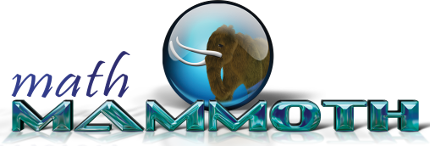How to find the greatest common factor (GCF)
The basics of the concept of the greatest common factor (GCF) of two numbers. The name itself explains what to do: find the factors of the two numbers, find the COMMON ones among them, and choose the greatest.
I go through several examples using this definition.
In the 2nd part of the lesson (below) I show a another method for finding the GCF, which is based on the prime factorization of the numbers.This lesson is meant for 6th grade math and onward. Additionally, you can practice finding the GCF of two, three, or four numbers here (online practice).
In the 2nd part, we find the GCF using the prime factorization of the numbers. This is a much faster and preferred way of finding the GCF when the numbers get larger.
I also tie this concept in with factoring and the distributive property. In algebra, we often need to factor expressions using the greatest common factor of the terms. This has its analogue when we consider rectangular areas: Can we arrange two given rectangular areas side by side (using whole-number side lengths)? A good way to do this is to use the greatest common factor of the two numbers (that signify the areas) as the common side.
See also
Least common multiple — video lesson
Math Mammoth Grade 6 curriculum
Receive my monthly collection of math tips & resources directly in your inbox — and get a FREE Math Mammoth book!
You can unsubscribe at any time.
